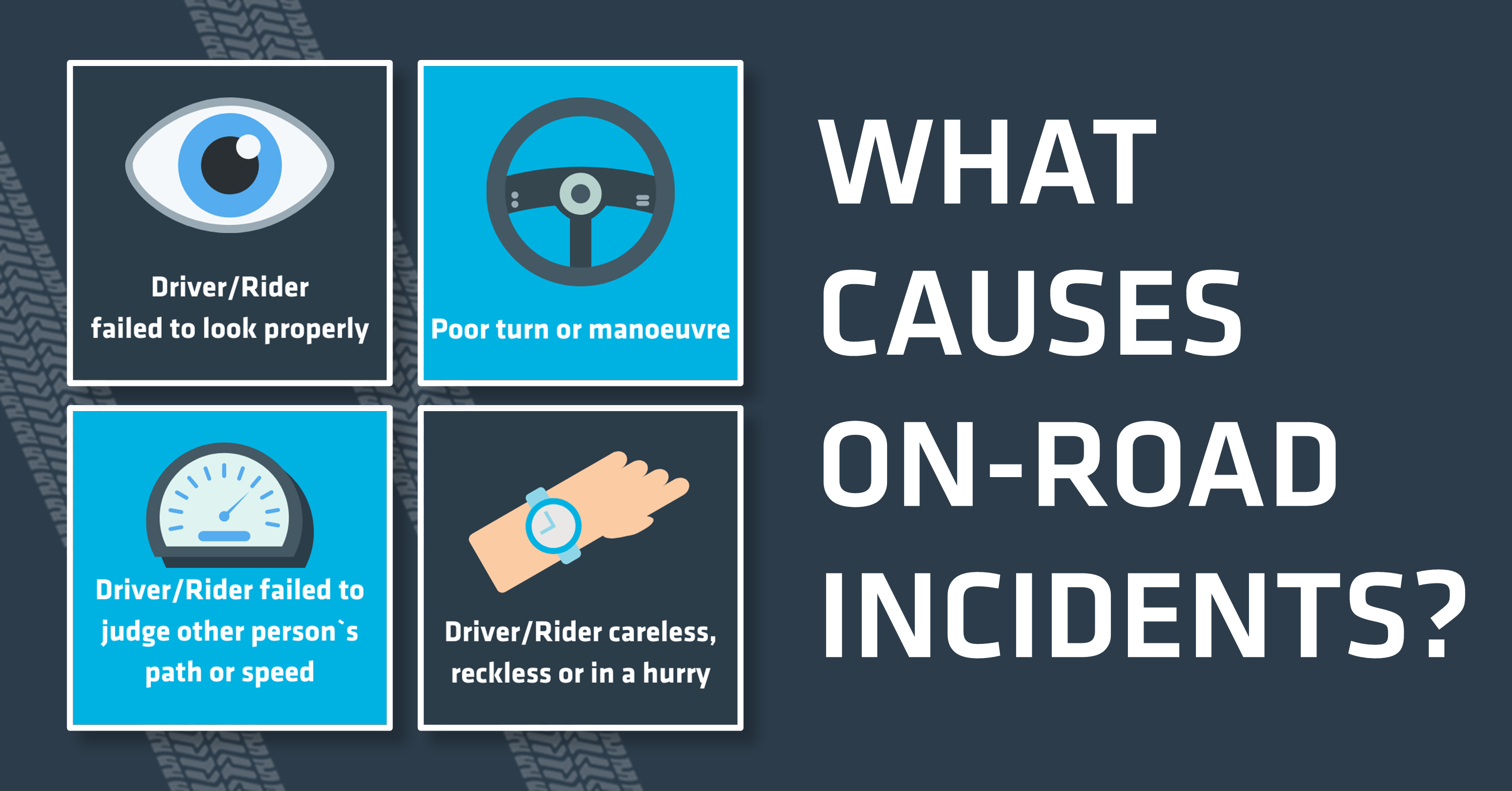
For many fleets, the first step to reducing the number of on-road incidents they experience is understanding the behaviours, skills, and knowledge of their drivers. While risk-management platforms make understanding and improving these factors easier, knowing the most common reasons that drivers and riders are involved in on-road incidents can help to paint a clearer picture of how to begin reducing them.
In 2019, the most common pairs of contributory factors to on-road incidents were1:
Let’s take a look at each factor in more detail and how they can be avoided.
- Driver/Rider failed to look properly
For business drivers who spend prolonged periods of time out on the roads, observation is one of the key skills they’ll need to develop to reduce on-road incidents. By fine-tuning their observation skills, drivers are more likely to spot developing hazards as well as the clues to upcoming ones. This is a vital part of advanced business driving and one that can be effectively developed through online training.
- Poor turn or manoeuvre
Manoeuvring large vehicles, or even standard company cars can present a unique challenge to many drivers, regardless of experience. While these statistics don’t go into detail on the exact turn or manoeuvre that led to each incident, specific training that is relevant to the type of driving your drivers undertake and the types of vehicles in your fleet, can help to minimise this factor. Topics such as familiarisation and tight-space manoeuvring are a great start and can be delivered remotely via e-learning.
- Driver/Rider failed to judge other person’s path or speed
Planning your own movements around those of other drivers and riders is another key skill that is vital to safe and efficient business driving. While experience is likely to be a factor, consistent and regular driver training can help to top up the skills of drivers who might otherwise fall foul of complacency, which can make them more susceptible to unpredictable situations. Again, online driver training can be used to train drivers remotely over lockdown, and a full online risk assessment of drivers’ skills and behaviours can help identify those drivers that need the most support.
- Driver/Rider careless, reckless or in a hurry
Business drivers may often find themselves up against tight deadlines. While the need for drivers to meet targets is obviously important, it’s worth remembering the benefits of promoting a strong safety culture. Buy outlining your prioritisation of safety over speed, backed by a robust fleet policy, drivers can feel reassured that their employer and colleagues will respect their safer driving. What’s more, safer and more controlled driving can often save time and money on journeys as those who rush often find themselves just waiting at lights for longer.
While these statistics give us a good insight into the kinds of factors at play with on-road incidents in the UK, it doesn’t necessarily paint the whole picture or reflect the skills and attitudes of your fleet. If you’re dedicated to the safety of your drivers and want to manage your fleet risk, contact us today and see how our range of products can help.







